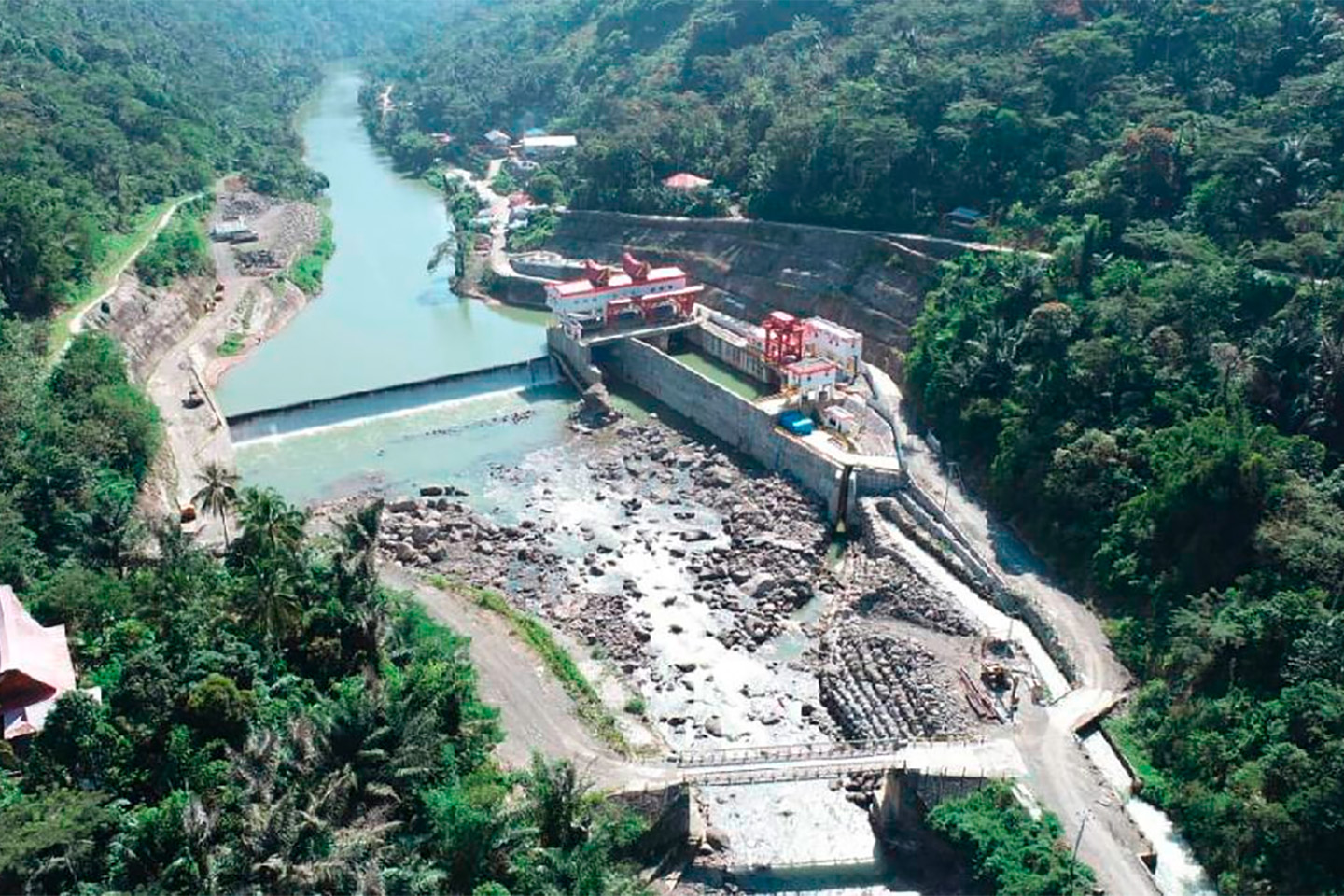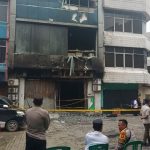Liga Asuransi – Dear risk takers, how are you? I hope your business is doing well.
As a senior insurance broker, this site will keep focusing on the discussion about risk management and insurance. This time we will explore the main risk that threatens the hydropower industry which is a landslide. Because the topic of this discussion area is complex and details, the discussion will be in 3 articles, this is the 3RD article so please ensure you read all 3 articles so can you get the whole picture of the messages.
If you are interested in this article, please share it with your friends so they can understand as much as you do.
Overall, hydropower in Indonesia’s energy mix aligns with the country’s goals of achieving sustainable, reliable, and environmentally friendly energy generation while promoting economic growth and energy security.
COMPREHENSIVE PLANS TO RESPOND TO LANDSLIDE EVENTS
Comprehensive plans for responding to landslide events are essential for several important reasons:
Human Safety:
The primary concern in any landslide event is the safety of human lives. A well-designed response plan outlines the necessary steps to evacuate people from high-risk areas and minimize the risk of casualties.
Timely Actions:
A response plan defines the roles and responsibilities of various stakeholders, ensuring that actions are taken promptly. This can include authorities, emergency services, and local communities.
Risk Mitigation:
A comprehensive plan includes strategies for mitigating the impact of landslides, such as implementing protective measures, reinforcing infrastructure, and stabilizing slopes to prevent further movement.
Infrastructure Protection:
Infrastructure, including roads, buildings, utilities, and hydropower plants, can be vulnerable to landslides. Response plans detail actions to protect critical infrastructure, assess damage, and facilitate repairs or reconstruction.
Resource Allocation:
Response plans allocate resources efficiently, ensuring that personnel, equipment, and materials are readily available for emergency operations. This minimizes delays in response and recovery efforts.
Coordination:
Landslide response often requires coordination among multiple agencies and organizations. Comprehensive plans establish communication protocols and coordination mechanisms to ensure a unified and efficient response.
Community Involvement:
Involving the affected communities is vital for a successful response. Response plans should outline how communities will be informed, engaged, and educated about landslide risks and safety measures.
Environmental Protection:
Landslides can have significant environmental impacts, such as soil erosion, water contamination, and habitat disruption. Response plans include strategies for minimizing these environmental effects.
Data Collection and Monitoring:
Plans should detail how data will be collected and analyzed during and after a landslide event. This information is essential for understanding the event, assessing risks, and making informed decisions.
Recovery and Rehabilitation:
Landslide response plans extend beyond the immediate emergency phase. They also address long-term recovery and rehabilitation efforts, such as rebuilding infrastructure, restoring ecosystems, and helping affected communities.
Legal and Regulatory Compliance:
Following a comprehensive plan ensures that response efforts align with legal and regulatory requirements, which can help prevent liability issues and ensure compliance with safety standards.
Public Awareness and Education:
Response plans include strategies for public awareness and education. Informed communities are better equipped to respond to landslide risks and take appropriate actions.
Adaptation to Changing Conditions:
As conditions change due to factors like climate change or urban development, response plans must be adaptable. Regular updates to the plan ensure it remains relevant and effective.
Lessens the Economic Impact:
A well-executed response plan can help minimize the economic losses associated with landslides. By acting swiftly and efficiently, the impacts on businesses, property, and local economies can be reduced.
Comprehensive landslide response plans are an essential component of disaster management and risk reduction efforts. They provide a structured and organized approach to addressing landslide events, enhancing safety, protecting infrastructure, and promoting the well-being of affected communities and the environment.
REAL-WORLD EXAMPLES
Providing examples of measures that are commonly used in hydropower projects in landslide-prone areas to mitigate risks. Keep in mind that the implementation and success of these measures may vary from one project to another, and it’s essential to refer to the most recent sources for up-to-date information on specific projects. Here are some common landslide mitigation measures used in Indonesian hydropower projects:
Slope Stabilization:
Engineers often employ engineering solutions to stabilize slopes. Techniques like rock bolting, soil nailing, shotcrete application, and the use of geosynthetic materials can help reinforce the soil and prevent slope failures.
Vegetation and Erosion Control:
Properly managed vegetation can enhance slope stability by preventing erosion. Native vegetation with deep root systems is often used to bind soil particles and reduce surface runoff.
Retaining Walls:
Retaining walls, particularly in areas with steep terrain, are used to hold back soil and prevent downslope movement. They are designed to withstand the lateral pressure of the soil and can be constructed from various materials, such as concrete or gabions.
Drainage Systems:
Effective drainage systems are essential for diverting water away from slopes, reducing soil saturation, and minimizing the risk of landslides. These systems include surface drainage, subsurface drainage, and retention ponds.
Geotechnical Instrumentation:
Monitoring equipment and sensors, such as inclinometers, piezometers, and geotechnical sensors, are installed to continuously assess ground movement, groundwater levels, and soil conditions. This data helps in early warning and risk assessment.
Early Warning Systems:
Early warning systems use data from monitoring equipment to detect anomalies and issue alerts when there is a potential landslide risk. These systems are crucial for providing advance notice to authorities and communities.
Sediment Control:
Managing sedimentation in reservoirs is critical for maintaining the long-term functionality of hydropower facilities. Strategies include sediment basins, silt curtains, and controlled releases.
Community Education and Preparedness:
Engaging with and educating local communities on landslide risks and safety measures is an integral part of risk mitigation. Community awareness and preparedness can save lives in the event of a landslide.
RELEVANT REGULATIONS
it’s important to note that regulations can change over time, so it’s essential to consult the most recent sources and authorities for the latest information.
Government Regulation No. 82/2001 on Water Resources Management:
This regulation provides a framework for the management of water resources in Indonesia, including the development of hydropower projects. It outlines provisions for environmental impact assessments (EIA) and includes considerations for landslides and slope stability in project planning.
Ministerial Regulation No. 29/2010 on Environmental Impact Assessments:
This regulation mandates that any project, including hydropower projects, undergo an environmental impact assessment to assess and mitigate potential environmental risks, such as landslides. It provides guidelines for conducting EIAs and managing environmental risks.
Ministerial Regulation No. 21/2011 on Guidelines for the Implementation of Environmental Management Efforts in Water Resource Utilization:
This regulation provides specific guidelines for the environmental management of water resource utilization projects, which include hydropower projects. It covers aspects of environmental risk management, including landslide risk assessment.
Decree of the Minister of Public Works No. 75/KPTS/M/2004 on River Basin Management:
This decree addresses the management of river basins and their associated risks, which can include landslide hazards. It establishes guidelines for sustainable land use and development in these areas.
Geological Agency (Badan Geologi):
Indonesia’s Geological Agency provides geological data, maps, and information on geological hazards, including landslides. These resources are essential for project developers and planners to assess landslide risk.
Local Government Regulations and Spatial Planning:
Local governments in Indonesia may have their own regulations and guidelines related to land use and development. These regulations can vary by region and should be considered when planning hydropower projects.
Environmental Impact Assessment (EIA) Reports:
EIA reports, as required by the Ministry of Environment and Forestry, provide specific details about how environmental risks, including landslides, are identified and managed in the context of individual hydropower projects.
It’s important to work closely with relevant Indonesian government agencies, such as the Ministry of Environment and Forestry, the Geological Agency, and local authorities, to ensure compliance with the most current regulations and guidelines related to landslide risk management in hydropower projects. Additionally, consulting with experts in geological and environmental engineering is crucial for conducting thorough landslide risk assessments and implementing effective mitigation measures.
HOW IS INSURANCE CONSIDERED THE RISK OF LANDSLIDE?
Insurance for hydropower plants typically considers the risk of landslides as part of its underwriting and risk assessment process. Landslides can pose significant risks to hydropower infrastructure, including damage to facilities, operational disruptions, and environmental impacts. Here’s how insurance providers consider landslide risks in hydropower plant coverage:
Risk Assessment:
Insurance companies conduct thorough risk assessments to evaluate the specific risks associated with a hydropower project, including those related to landslides. This assessment includes the location of the plant, geological conditions, historical landslide events in the area, and the design and construction of the facility.
Site Inspection:
Insurance underwriters may visit the hydropower site to assess its vulnerability to landslides and other perils. They examine the terrain, slope stability, and the presence of any protective measures.
Geotechnical Analysis:
Geotechnical reports and soil stability studies are often reviewed to assess the geological and geotechnical factors that may increase or decrease landslide risk. These reports help insurers understand the stability of the site.
Mitigation Measures:
Insurance providers consider the effectiveness of any landslide mitigation measures that have been implemented. This includes reviewing the design and construction of retaining walls, slope stabilization techniques, and drainage systems.
Loss Prevention and Risk Management:
Insurance companies may offer guidance and incentives for loss prevention and risk management. This could include recommendations for enhanced monitoring, maintenance, or upgrades to reduce landslide risks.
Data and Historical Events:
Historical landslide events in the region are reviewed to understand the frequency and severity of landslides in the area. This data informs the insurance underwriting process.
Coverage and Premiums:
The evaluation of landslide risk influences the type of coverage provided and the cost of insurance premiums. High-risk areas may require more comprehensive coverage and result in higher premiums.
Exclusions and Deductibles:
Insurance policies may include specific exclusions related to landslide risks or set deductibles that the insured party must pay in the event of a landslide-related claim.
Claims Handling:
In the event of a landslide-related claim, insurance providers will assess the damage, investigate the cause, and determine whether the loss is covered by the policy. The findings of the risk assessment and site inspection are important in the claims handling process.
It’s important for hydropower plant operators and developers to work closely with insurance providers to ensure that their coverage adequately addresses landslide risks. This may include implementing recommended risk mitigation measures, enhancing monitoring and reporting systems, and maintaining open communication with the insurer to address concerns and minimize risks.
WHY DO YOU NEED THE EXPERIENCED INSURANCE BROKER?
Engaging an experienced insurance broker is highly beneficial when arranging insurance for a hydropower plant due to the complex and specialized nature of the insurance process in the energy and infrastructure sectors. Here are several reasons why an experienced insurance broker is essential:
Industry Expertise:
Experienced insurance brokers have in-depth knowledge of the energy and infrastructure sectors, including hydropower. They understand the unique risks associated with such projects and are familiar with industry-specific insurance products and coverage needs.
Risk Assessment:
Insurance brokers can assess the specific risks of a hydropower plant comprehensively. They understand the complexities of landslide risks, operational disruptions, equipment breakdown, and other potential issues. This expertise helps in securing adequate coverage.
Access to Specialized Markets:
Experienced brokers have access to a wide network of insurance providers, including those who specialize in energy and infrastructure. This allows them to source competitive quotes and tailor insurance solutions to the project’s needs.
Customized Coverage:
Insurance brokers work closely with clients to develop customized insurance packages that address the unique risks of a hydropower plant. They ensure that the coverage aligns with the project’s size, location, and specific risk factors.
Cost-Effective Solutions:
Brokers can negotiate on behalf of the client to obtain favorable terms and pricing. They help clients strike a balance between cost-effective coverage and comprehensive protection.
Claims Assistance:
In the unfortunate event of a claim, experienced brokers can assist in the claims process. They advocate on behalf of the client to ensure that claims are handled efficiently and fairly.
Risk Management:
Brokers often provide risk management advice to clients, helping them implement preventive measures that can reduce the likelihood of insurance claims and lower overall insurance costs.
Regulatory Compliance:
Insurance brokers stay up to date with local and international regulations related to insurance in the energy sector. This ensures that clients remain compliant with legal requirements.
Savings in Time and Resources:
Engaging a broker saves time and resources that would otherwise be spent researching insurance options, negotiating with insurers, and managing the administrative aspects of insurance.
Long-Term Relationships:
Experienced brokers develop long-term relationships with their clients, working with them on multiple projects. This continuity ensures that the insurance coverage evolves to meet changing needs.
Peace of Mind:
With an experienced broker handling insurance matter, clients have peace of mind knowing that they have expert guidance and support in managing their risk exposure.
In summary, an experienced insurance broker plays a pivotal role in securing the right insurance coverage for a hydropower plant. They provide industry-specific knowledge, access to specialized markets, customized solutions, and claims support. This expertise ultimately helps protect the investment and ensure the project’s long-term success.
One of the leading insurance brokers in Indonesia focusing on Hydropower plants is L&G Insurance Brokers.
For your insurance needs in Indonesia, call L&G Insurance Broker now!
—
LOOKING FOR INSURANCE PRODUCTS? DON’T WASTE YOUR TIME AND CONTACT US RIGHT NOW
L&G HOTLINE 24 HOURS: 0811-8507-773 (CALL – WHATSAPP – SMS)
website: lngrisk.co.id
E-mail: customer.support@lngrisk.co.id
—















